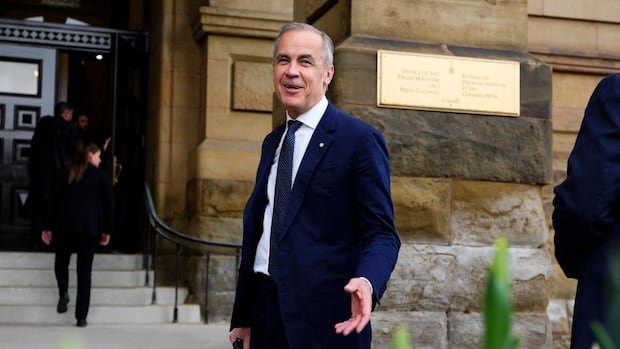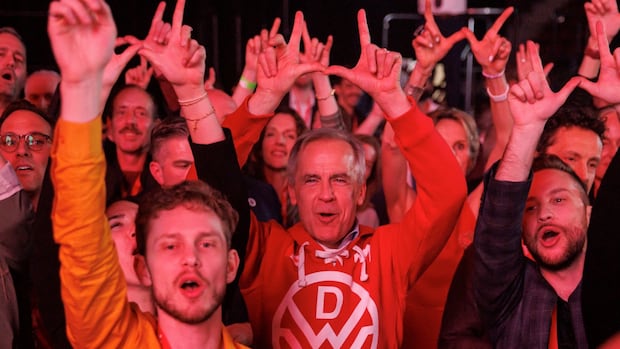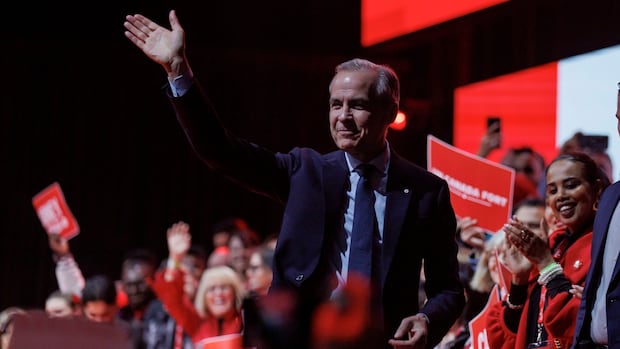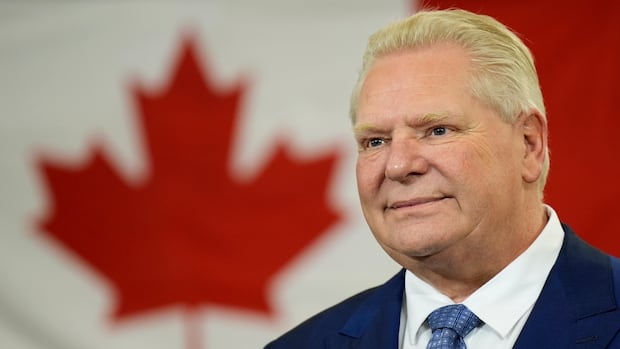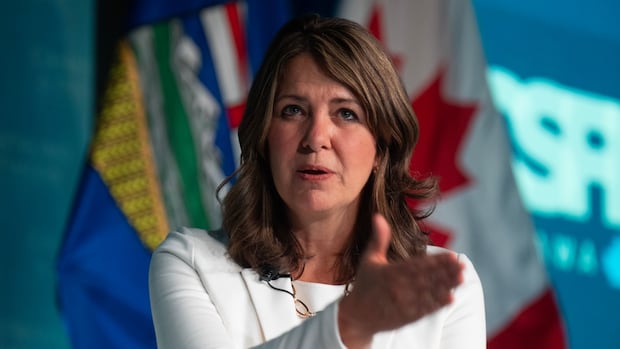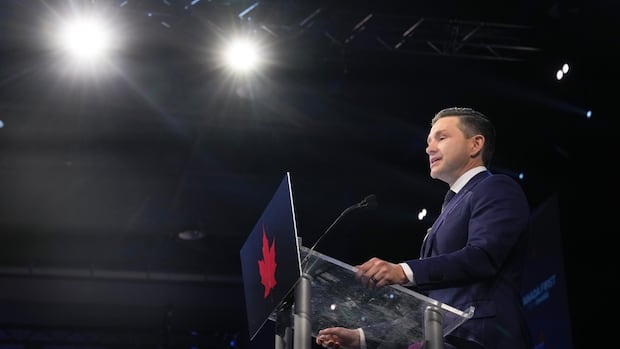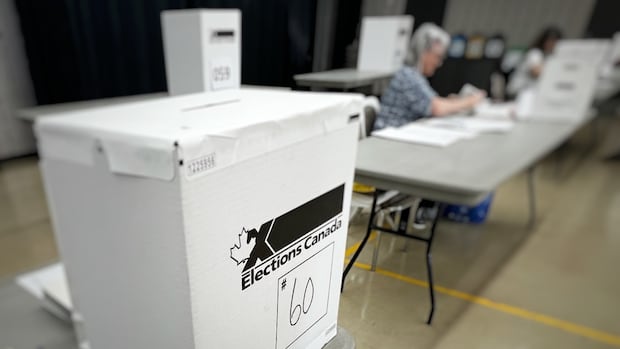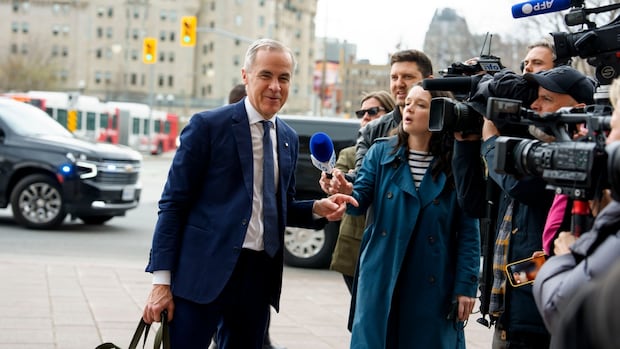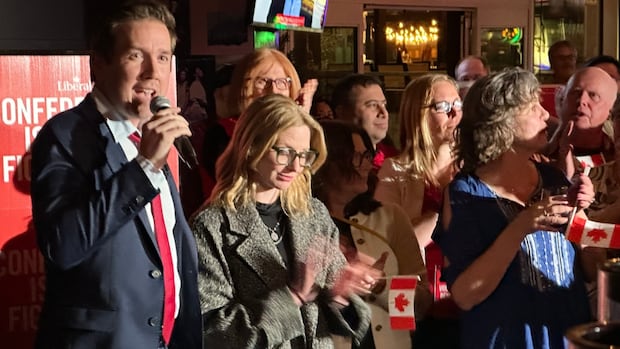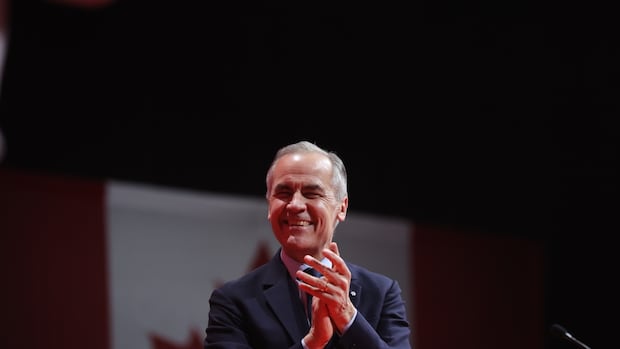Canada's 45th general election has significantly shaken up the composition of the House of Commons.
The historic vote saw the emergence of a two-horse race between the Liberals and Conservatives, the collapse of NDP support and some rather significant incumbent losses.
Here are six takeaways from Monday's election.
Tight races push final result to Tuesday afternoonLiberal Leader Mark Carney will form a minority government, CBC News now projects. But tight races in a number of ridings made that too difficult to determine on election night.
Elections Canada halted its count at about 4:30 a.m. ET Tuesday before picking up the count later in the day. As the last results trickled in Tuesday afternoon, the CBC Decision Desk projected a minority just before 4 p.m. — almost a full day after the first polls began to close.
The Liberals appear set to win 169 seats — just short of the 172 needed for a majority.
WATCH | Federal election night '25 in 3 minutes: Didn’t watch election results? CBC’s Ashley Fraser explains how the 45th Canadian federal election night unfolded. Note: This video updates a previous one to include CBC News's projection of a Liberal minority government.NDP collapse and the 2-horse raceWhen the dust settles, the main story of the 2025 election will likely be the two-horse race that developed between the Liberals and Conservatives.
A large part of the race developing into a showdown between the two parties had to do with the collapse of NDP support, and to a lesser extent a downturn in the Bloc's fortunes.
Shortly after midnight in B.C., Jagmeet Singh said he would be stepping down with the NDP set to lose official party status in the House and Singh himself set to lose his own seat.
WATCH | Singh gets emotional as he announces he will step down: Jagmeet Singh announces that he is stepping down as leader of the NDP as soon as an interim leader can be named. At the time of his announcement, Singh was trailing in his B.C. riding of Burnaby Central.The Liberals and Conservatives were both able to feast on the lack of NDP and Bloc support.
The Conservatives picked up a number of traditionally orange seats, especially in blue-collar ridings like Ontario's Windsor West and Manitoba's Elmwood-Transcona.
The Liberals, on the other hand, picked up NDP seats in B.C. ridings. But the collapse of the NDP was also on full display in ridings where the Liberals held their seats. In Halifax, for example, the NDP have won or placed second in the riding since 2004, but trailed in third after Monday's election.
The Liberals also ate up seats from the Bloc, including in the South Shore area of Montreal. Those pickups helped offset losses elsewhere, specifically in Ontario.
2 leaders without seats?Both Conservative Leader Pierre Poilievre and NDP Leader Jagmeet Singh were projected to lose their seats. CBC News projected Poilievre would lose to Liberal Bruce Fanjoy in his longtime rural Ottawa seat of Carleton, an electoral district Poilievre represented since 2004. The Conservative leader had been trailing in the vote count all night.
Meanwhile, Singh was projected to lose his B.C Burnaby Central riding to Liberal Wade Chang, finishing in third place.
While Singh resigned, Poilievre signalled his intention to stay on.
"It will be an honour to continue to fight for you and be a champion for your cause as we go forward," he said.
The decision to stay or go for both leaders likely came down to seat count. The NDP lost official party status in the House, while Poilievre's party increased its tally by nearly two dozen seats — boosting the Conservative popular vote share at the same time.
Conservatives outperform in OntarioAlthough they didn't win government, the Conservatives outperformed most polls, especially in vote-rich Ontario.
Heading into Monday's election, Conservatives were averaging 41 per cent support in Canada's biggest province, according to CBC's Poll Tracker. But the party appears to have garnered closer to 45 per cent of the vote in Ontario.
In terms of seat count, the party was able to wrestle away a number of ridings from both the NDP and Liberals.
Poilievre's party was able to break through in the 905 region surrounding Toronto — in Richmond Hill, Vaughan, Brampton and York — while also snagging NDP seats in Windsor and London.
Federal, provincial conservative tensionsSpeaking of Ontario, Conservative tensions with their provincial counterparts were on full display before election night.
Kory Teneyke — of the country's top Conservative strategists who just helped Ontario Premier Doug Ford win a sizable majority government — had publicly criticized the federal Conservative campaign, accusing the party of not adequately addressing the U.S. trade war.
Ford himself backed his campaign manager up when speaking to reporters earlier this month.
"Sometimes the truth hurts," Ford said of Teneyke's criticisms.
Once the polls started rolling in on Monday night, showing a better-than-expected result for the Conservatives — especially in Ontario — one Conservative candidate went off on Ford.
WATCH | Jamil Jivani slams Doug Ford during fiery interview: Jamil Jivani, the Conservative incumbent for Bowmanville-Oshawa North who is known for his friendship with U.S. Vice President JD Vance, is projected to win his seat. During an interview with CBC’s David Common, Jivani made some sharp remarks about Ontario Premier Doug Ford, saying that he’s 'not doing anything particularly well.'"I think Doug Ford is a problem for Ontario and for Canada," Jamil Jivani told CBC News after winning the Ontario riding of Bowmanville-Oshawa North.
"This guy's a political genius because he beat [Ontario Liberal Leader] Bonnie Crombie and [former Ontario Liberal leader] Steven Del Duca? And now we got to sit around and get advice from him?" Jivani asked rhetorically.
"He has taken the provincial conservatives and turned it into something hollow."
Jivani called Ford an "opportunist" and said the people around him are "goons." His remarks, when played at the Conservative party HQ in Ottawa, prompted cheers.
Beyond tensions with Ford, the federal Conservative campaign also had tensions with Nova Scotia Premier Tim Houston, who was notably absent from Poilievre's rally in Trenton, N.S., last week.
Where do we go from here?In six of the last eight elections, voters have elected a minority government. That includes Monday's election.
This election has shifted the makeup of the House, but some dynamics might remain consistent.
The NDP — which was able to squeeze policy commitments out of former prime minister Justin Trudeau — has a diminished role. But even without official party status, the few seats they do have provide them some leverage with a Liberal government that is just shy of a majority.
The Bloc, although returning to Ottawa with a reduced caucus, will also still have leverage and could push its priorities. Leader Yves-François Blanchet has said he's willing to work with the Liberals.
But after months of gridlock in Parliament leading up to Trudeau's resignation, Canadians could rightfully question how a House heavily divided between Liberals and Conservatives will move forward.
In a potentially hopeful sign, both Carney and Poilievre indicated in the early Tuesday hours that they're both focused on the U.S. tariff threat.
Poilievre said that he'd work with other parties in "getting a trade deal that puts these tariffs behind us while protecting the sovereignty of Canada and the Canadian people."
Despite winning government, Carney acknowledged the "millions of our fellow citizens preferred a different outcome.… Let's put an end to the division and anger of the past. We are all Canadian and my government will work for and with everyone."


